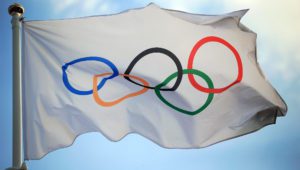There are many conversations across the web about how coaches deal with pushy sports parents doting over their children. Some parents even stop their children from competing for fear of injury or loss of study time. Mac from Basketball For Coaches recommends these 7 steps:
Coaches and Parents behaviour:
Great Rowing: Robert Manson. Photo Credit: WorldRowing
One of our followers (let’s call him Andrew) and guest has experienced something new to him. He is new in our sport and has been sculling since 10 month. He did a lot of slo-mo investigation at Elite rowers.
I’ve been sculling in the single for 10 months and I’ve started to overtake people who could outpace me easily. But, But,,,
I know a lot of this is because I have respectable ergo scores and I’m relying on fitness to over-compensate for bad technique. I know this is a dead-end. For example, I lined up next to a sculler at a head race and measured myself against him. Tiny bit taller but quite a huge belly and an “I don’t do fitness” aura about him. My fitness was going to win through right? Wrong… He beat me by 45 seconds! I couldn’t get to grips with it. How could somebody that out of shape go so fast? So I now accept that technique counts for a lot. But I don’t have any technique. I’m going to hit my fitness ceiling and those guys who are just currently out of my reach will remain there: just out of reach.
This is where I need guidance. What practices will return the biggest gains, in order of the results they bring? Say if I’m going to work on 5 things?
Is it something like:
- Perfect catches
- Perfect finishes
- Driving at correct blade depth
- Perfect drive sequencing
- Perfect recovery
…something like that?
Rowperfect has asked Joe DeLeo, founder of www.leotraining.io and Strength Coach of the Portuguese Rowing Federation.
He finds this a very astute observation. “Efficiency will lead to long term gains in sustainable speed. As we age, strength and power inevitably will decline. However, we can always focus on improving our technique and efficiency.
First thing to change your bad rowing technique
 Beginner sculling in a stable boat
Beginner sculling in a stable boat
Pick 1 component in your list to work on. Devote all of your energy and focus to that. As you make changes you can shift your technical focus to a different aspect after a certain period of time.
If I were to list the top 5 they would be:
- Posture and Alignment
- The Catch
- The Drive
- The Release
- The Recovery
Posture: Improve bad rowing technique
I recommend starting with posture and alignment first because, if you are not in the correct position it will be difficult to make good quality technical changes. Make sure you are sitting on your sit bones, hinging from the hips, and keeping a tall chest. To achieve this you have to have adequate mobility through the hips and excellent execution of the rowing stroke sequence.
Once this foundation is in place break the catch into smaller parts:
- Squaring
- Approaching the water; the blade should enter back and down. “Dropping” communicates, to me, a 90 degree entry. You are aiming for a continued back and downward trajectory.
- Static — Single Impulse/Repetition — Multiple Impulse and Dynamic Repetition
- This is a progression. Begin with Catch placement drills on the square. Then catch placement on the feather.
- Progress to single strokes – checking the 1x down after each repetition.
- Progress to sets of 5-10 strokes and try to make the catch feel exactly the same each time.
Vary and adjust this as you make progress to work on the accuracy of your bladework. Happy Sculling!
About the author:
Joe DeLeo is a full time Strength & Conditioning Coach at Lawrence Memorial Hospital Performance & Wellness Center in Lawrence, Kansas. He coaches inside a sports performance and physical therapy clinic at Rock Chalk Park. He works with athletes returning directly from sports rehabilitation as well as athletes focused on performance in the sports of baseball, basketball, golf, soccer, swimming, track & field, and volleyball.Joe is also Head Strength Coach of the Portuguese Rowing Federation.






